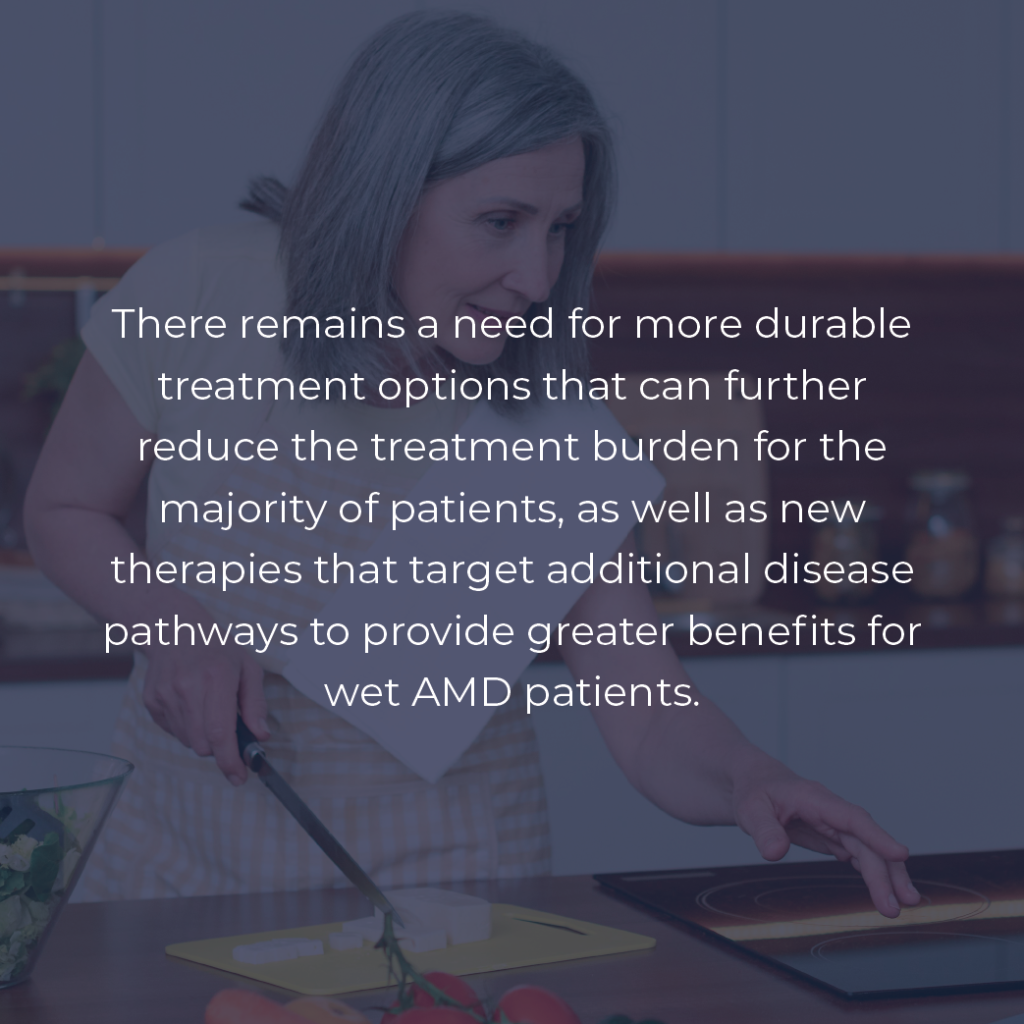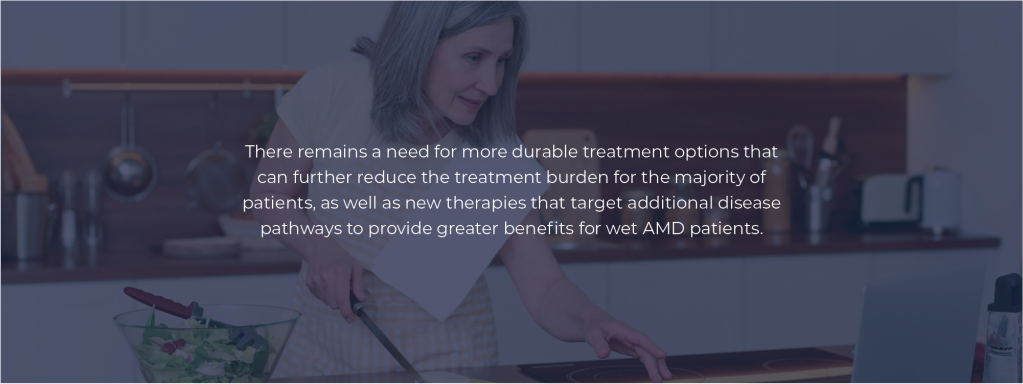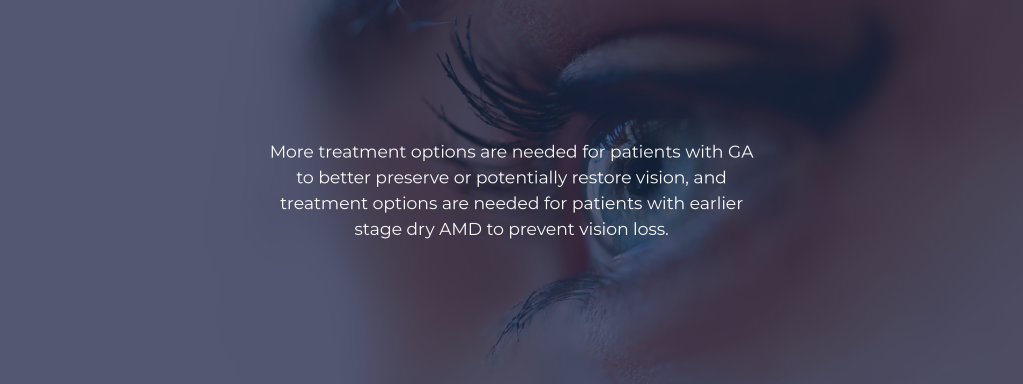WHAT IS AGE-RELATED MACULAR DEGENERATION (AMD)?
Age-related macular degeneration (AMD) is a very common degenerative disease of the retina, the light-sensitive tissue in the back of the eye that helps process visual information. It occurs when aging damages the macula, the region within the retina responsible for clear central vision.
There are two types of AMD, commonly referred to as “wet” and “dry.”
Wet AMD
Around 10-20% of people with AMD have wet AMD, an advanced form of AMD. Although less common, it is much more serious because it can lead to permanent vision loss quickly if not treated.
In wet AMD, the retina produces a protein called VEGF to stimulate the growth of new blood vessels (neovascularization). When there is too much VEGF, abnormal blood vessels grow in the layer beneath the retina, the choroid. The presence of the resulting choroidal neovascularization is what defines the wet form of AMD. These blood vessels are abnormal, grow underneath the macula and leak fluid into the macula, resulting in visual distortion and acute vision loss. If untreated or inadequately treated, wet AMD leads to scar formation and permanent damage that results in blindness.
CURRENT TREATMENT AND LIMITATIONS
The goal of treatment is to maintain functional vision to the greatest extent possible for the greatest duration possible.
Current standard of care for wet AMD targets the protein VEGF and requires injections in the eye every 4 to 8 weeks with some patients able to extend beyond 8 weeks. Newer treatments are becoming available that provide every 12 to 16-week dosing for some patients in clinical studies. These treatment intervals have yet to be validated in the real-world, however. In addition to a high treatment burden, many patients with wet AMD do not respond well to anti-VEGF treatment alone, even with frequent dosing.


Dry AMD
Of the nearly 20 million individuals affected by AMD in the U.S., approximately 80-90% have the dry form. Dry AMD can progress in stages and eventually lead to Geographic Atrophy or convert to wet AMD, two advanced forms of AMD that lead to vision loss.
In dry AMD, areas of the macula get thinner with age. It is characterized by the formation of tiny clumps of fats combined with protein known as drusen on the retina. Drusen can grow in size and impede blood flow and delivery of nutrients to the retina. People with dry AMD can experience vision loss and substantial functional limitations, including vision fluctuations, visual distortion and reduced night vision.
When dry AMD progresses it can lead to Geographic Atrophy (GA). In GA, the light sensitive cells in the eye (photoreceptors) deteriorate and gradually die in the macula. As these cells die, a person starts to lose central vision. Eventually, permanent blind spots (scotomas) develop in the center of the visual field. GA causes irreversible vision loss.
CURRENT TREATMENT AND LIMITATIONS
There are no approved treatments for the early stages of dry AMD and there are limited approved therapies for GA, which require monthly or every other month injections in the eye and work to reduce the rate of disease progression but do not halt the disease or restore vision.


HOW KODIAK CAN HELP
Kodiak’s Antibody Biopolymer Conjugate (ABC) medicines in clinical development are designed to address these important challenges and may provide greater therapeutic benefit to patients than existing treatment options. Learn more.
REFERENCES
- Age-Related Macular Degeneration: Facts & Figures. BrightFocus® Foundation. Updated March 7, 2023. Accessed June X, 2023. https://www.brightfocus.org/macular/article/age-related-macular-facts-figures
- Rein et al. Prevalence of Age-Related Macular Degeneration in the US in 2019. JAMA Ophthalmol. 2022;140(12):1202-1208. doi:10.1001/jamaophthalmol.2022.4401
- Mukamal R. What to Know After a Macular Degeneration Diagnosis. American Academy of Ophthalmology. Published March 17, 2023. Accessed June X, 2023. https://www.aao.org/eye-health/tips-prevention/how-macular-degeneration-changes-vision-life














